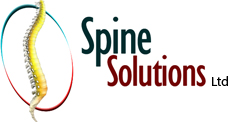-
 Lumbar Disc Herniation
Lumbar Disc HerniationLumbar disc herniation is the most common cause of lower back pain and leg pain (sciatica). Aging, injury or trauma may cause the annulus fibrosus to tear, resulting in protrusion of the nucleus pulposus.
-
 Spondylolysis
SpondylolysisSpondylolysis is a stress fracture in the vertebra that may progress into spondylolisthesis, a condition where the vertebra gets displaced from the spinal column.
-
 Radiculopathy
RadiculopathyCertain diseases or mechanical compression of these spinal nerves due to deformities in the vertebral column can lead to radiculopathy.
-
 Back Pain
Back PainBack pain or backache is the pain felt in the back that may originate from damage to the muscles, nerves, bones, joints or other structures in the spine.
-
 Spondylolisthesis
SpondylolisthesisSpondylolisthesis is the displacement of the vertebral disc from the spinal column. Outward (forward) displacement is termed as anterolisthesis and inward (backward) displacement is termed as retrolisthesis.
-
 Spine Bone Spurs
Spine Bone SpursSpine bone spurs, also called osteophytes, are bony projections that develop in the spine’s facet joints where cartilage has worn out or along the vertebral body’s endplates edges.
-
 Spinal Stenosis
Spinal StenosisSpinal stenosis is a condition caused by the vertebral column constricting and exerting pressure on the spinal cord or neural foramen (a bony tunnel through which a nerve exits the spinal cord).
-
 Vertebral Compression Fractures
Vertebral Compression FracturesBack pain is an indication of stress fractures known as vertebral compression fractures. Vertebral compression fractures occur when the normal vertebral body of the spine is squeezed or compressed.
-
 Osteoporotic Fractures
Osteoporotic FracturesOsteoporotic fractures are breaks in your bones caused by osteoporosis. A mild fall or twisting and simple acts like bending over or coughing can result in fractures of your spinal bones due to osteoporosis.
-
 Failed Back Surgery Syndrome
Failed Back Surgery SyndromeFailed back surgery syndrome is a term used to describe poor results from previous spine surgery.
-
 Facet Joint Arthritis
Facet Joint ArthritisFacet joint arthritis, also known as facet joint syndrome, is a form of arthritis that affects the facet joints of the spine. This condition is related to the aging process.
-
 Degenerative Spinal Conditions
Degenerative Spinal ConditionsDegenerative spinal conditions refer to a gradual loss of normal structure and/or function of the spine over time.
-
 Adult Degenerative Scoliosis
Adult Degenerative ScoliosisAdult degenerative scoliosis is characterized by side to side or lateral bending of the spine in adults. Degenerative scoliosis can involve either the mid-back and/or lower back region of the spine.
-
 Sacroiliac Joint Dysfunction
Sacroiliac Joint DysfunctionSacroiliac joint dysfunction or sacroiliac joint pain is one of the common causes of low back pain.
-
 Adjacent Segment Disc Disease
Adjacent Segment Disc DiseaseSpinal fusion surgery involves the fusion of two or more vertebral bones and is a standard of care for spinal deformities and conditions such as radiculopathy, myelopathy, and spondylolisthesis.
-
 Peripheral Nerve Compression
Peripheral Nerve CompressionThe human body has 2 nervous systems, the central nervous system that includes the brain and spinal cord, and the peripheral nervous system that includes a network of nerves that lie outside the brain and spinal cord.
-
 Spondyloarthropathies
SpondyloarthropathiesSpondyloarthropathies are a group of chronic inflammatory diseases of the spine and joints. Spondyloarthropathies can occur at any age, however, they occur more often in young males.
-
 Ankylosing Spondylitis
Ankylosing SpondylitisAnkylosing spondylitis is a systemic disease affecting other tissues and organs throughout the body. It can cause inflammation of faraway joints and organs such as the eyes, heart, lungs, and kidneys.
-
 Difficulty Walking
Difficulty WalkingDifficulty walking is defined as inability to walk properly due to abnormal and uncontrollable walking patterns. This can be attributed to factors such as genetics, neurological disorders, musculoskeletal disorders, injuries or other diseases.
-
 Spine Deformities
Spine DeformitiesSpine deformity can be defined as abnormality in the shape, curvature, and flexibility of the spine. When the curves are exaggerated, pronounced problems can occur such as back pain, breathing difficulties and fatigue.
-
 Scoliosis
ScoliosisScoliosis is a condition characterized by the abnormal curvature of the spine that causes a deviation to one side. It causes a physical deformity, making the spine look like the letter “C” or “S” instead of the letter “I”.
-
 Scheuermann's Kyphosis
Scheuermann's KyphosisScheuermann’s kyphosis is a deformity of the spine that develops during growth. It can be considered as increased kyphosis. Kyphosis is the C-shaped curving of the spine and is also known as hunchback.
-
 Lordosis
LordosisThe spine forms a natural curve at the neck, torso, and lower back, which allows it to absorb shock and hold the weight of your head.
-
 Spine Idiopathic Scoliosis
Spine Idiopathic ScoliosisScoliosis is a medical condition characterized by an abnormal lateral curvature of the spine, either to the left or to the right.
-
 Poor Balance
Poor BalancePoor balance can be defined as a sense of unsteadiness on your feet due to dizzy spells or lightheadedness, fainting, blackouts, or loss of consciousness.
-
 Sagittal Imbalance
Sagittal ImbalanceThe spine has three natural curves when viewed from the side, an inward curve in the neck and lower spine called lordosis and an outward curve in the mid-back called kyphosis.
-
 Spine Trauma
Spine TraumaSpine trauma is defined as an injury or damage to any region of the spine. The spine extends from the neck to the lower back and consists of the vertebral bones which surround and protect the spinal cord.
-
 Fractures of the Spine
Fractures of the SpineA fracture of the spine is a break in the bone continuity of the spinal vertebrae or vertebral column. The spine extends from the neck to the lower back and consists of the vertebral bones which surround and protect the spinal cord.
-
 Spinal Infection
Spinal InfectionA spinal infection is described as an infection of the spine. It can occur in various locations of the spine i.e., intervertebral disc space, vertebral column, spinal canal, and nearby soft tissues.
-
 Epidural Abscess
Epidural AbscessAn epidural abscess is a medical condition that can be defined as an infection in the region between the spine, or bones of the skull, and the membranes that surround the spinal cord (meninges) and brain.
-
 Discitis
DiscitisDiscitis, also called discitis, is inflammation between the spaces of the intervertebral discs in the spine. Intervertebral discs are located between the vertebrae and spaces between them are called intervertebral disc spaces.
-
 Spinal Tumors
Spinal TumorsA spine tumor is the abnormal growth of uncontrolled tissues or cells in and around the spinal cord. Tumors can either be cancerous (malignant) or non-cancerous (benign). Tumors that begin in the spine are called primary spinal tumors.
-
 Metastatic Tumours
Metastatic TumoursA metastatic tumor is a lump in your spine that is produced by cancer elsewhere in your body. It is the more common type of tumor in the spine.

